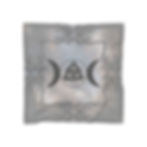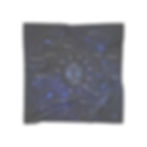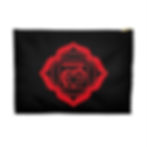The 24 Nordic Runes: Ancient Symbols of Wisdom, Power, and Transformation
- Michele Thompson
- Aug 12
- 7 min read

"The runes are not just letters; they are living whispers from the old gods, guiding those who dare to listen."
What Are the Nordic Runes?
The Nordic Runes, also called the Elder Futhark, are a set of 24 ancient symbols used by the Norse, Germanic, and other northern European peoples between roughly 150–800 CE. Far more than a writing system, the runes carried deep magical, spiritual, and divinatory significance.
In Norse mythology, it was the god Odin who discovered the runes after hanging for nine nights on the World Tree, Yggdrasil, sacrificing himself in a mystical act of self-initiation. This tale, found in the Hávamál of the Poetic Edda, reveals the runes as gifts of divine knowledge, offering guidance, empowerment, and insight to those who learn their mysteries.
The runes served many purposes:
Communication: Inscribed on wood, bone, or stone to record names, memorials, and magical charms.
Magic: Used in talismans, spells, and protective inscriptions.
Divination: Cast or drawn to gain insight into the unseen patterns of life.
Today, the 24 Nordic runes are not merely historical artifacts—they remain potent symbols for spiritual seekers, pagans, and those drawn to Norse traditions.

Exploring the 24 Norse Runes and Their Meanings
The Elder Futhark is divided into three aettir (families), each containing eight runes. These groupings not only serve a phonetic role but also represent cycles of life, challenges, and triumphs.
The First Aett – Fehu Group: Beginnings and Prosperity
This aett deals with new beginnings, material wealth, and personal growth.
Fehu (ᚠ) – Wealth, prosperity, new beginnings.
Upright: Success, financial growth, abundance.
Reversed: Loss, greed, missed opportunities.
Uruz (ᚢ) – Strength, health, primal power.
Upright: Vitality, courage, determination.
Reversed: Weakness, lack of motivation, illness.
Thurisaz (ᚦ) – Challenge, defense, reactive force.
Upright: Protection, boundaries, decisive action.
Reversed: Misuse of power, danger, recklessness.
Ansuz (ᚨ) – Wisdom, communication, divine inspiration.
Upright: Guidance from higher powers, insight, eloquence.
Reversed: Lies, misunderstanding, confusion.
Raidho (ᚱ) – Journey, movement, life’s path.
Upright: Progress, purposeful travel, alignment with destiny.
Reversed: Delays, disconnection, being off course.
Kenaz (ᚲ) – Illumination, creativity, revelation.
Upright: Clarity, inspiration, problem-solving.
Reversed: Darkness, creative block, ignorance.
Gebo (ᚷ) – Gift, generosity, partnership.
Upright: Harmony, exchange, love, alliances.
Reversed: Unequal exchange, selfishness, broken trust.
Wunjo (ᚹ) – Joy, harmony, comfort.
Upright: Happiness, good fortune, peace.
Reversed: Discontent, disharmony, sorrow.
The Second Aett – Hagalaz Group: Transformation and Challenges
This aett represents trials, upheaval, and the forces of transformation.
Hagalaz (ᚺ) – Disruption, change, natural forces.
Upright: Necessary change, breakthrough, cleansing.
Reversed: Stagnation, avoidance of transformation.
Nauthiz (ᚾ) – Need, hardship, resistance.
Upright: Endurance, inner strength, overcoming obstacles.
Reversed: Self-imposed limitations, victim mindset.
Isa (ᛁ) – Stillness, standstill, ice.
Upright: Reflection, patience, pause.
Reversed: Impatience, reckless action.
Jera (ᛃ) – Harvest, reward, cycles.
Upright: Success after effort, patience paying off.
Reversed: Poor planning, missed timing.
Eihwaz (ᛇ) – Endurance, death-rebirth cycle.
Upright: Resilience, transformation, protection.
Reversed: Fear of change, vulnerability.
Perthro (ᛈ) – Mystery, fate, hidden knowledge.
Upright: Revelation, synchronicity, divination.
Reversed: Secrets withheld, unexpected loss.
Algiz (ᛉ) – Protection, higher self, defense.
Upright: Spiritual guardianship, awareness, shielding.
Reversed: Danger, lack of caution, vulnerability.
Sowilo (ᛋ) – Sun, success, vitality.
Upright: Victory, growth, illumination.
Reversed: Burnout, arrogance, false confidence.
The Third Aett – Tiwaz Group: Honor and Strength
This aett embodies leadership, justice, and the pursuit of higher ideals.
Tiwaz (ᛏ) – Honor, justice, warrior spirit.
Upright: Integrity, courage, leadership.
Reversed: Dishonor, imbalance, cowardice.
Berkano (ᛒ) – Birth, nurturing, new growth.
Upright: Fertility, healing, family.
Reversed: Loss, neglect, stunted growth.
Ehwaz (ᛖ) – Partnership, movement, trust.
Upright: Teamwork, progress, loyalty.
Reversed: Betrayal, instability, mistrust.
Mannaz (ᛗ) – Self, humanity, community.
Upright: Cooperation, self-awareness, connection.
Reversed: Isolation, self-delusion, arrogance.
Laguz (ᛚ) – Water, intuition, flow.
Upright: Psychic abilities, adaptability, healing.
Reversed: Emotional block, confusion, manipulation.
Ingwaz (ᛜ) – Completion, rest, stored energy.
Upright: Fulfillment, peace, preparation for new cycles.
Reversed: Incompletion, dissatisfaction, delays.
Dagaz (ᛞ) – Breakthrough, awakening, hope.
Upright: Transformation, joy, clarity.
Reversed: Missed opportunities, delayed change.
Othala (ᛟ) – Heritage, home, ancestral blessings.
Upright: Legacy, inheritance, stability.
Reversed: Family conflict, loss of security.
History and Origin of the Nordic Runes
The Nordic runes have their roots in the early Germanic peoples’ cultural and spiritual life. The earliest confirmed runic inscriptions date to around 150 CE, found carved into combs, spearheads, and amulets across what is now Denmark, Germany, and Sweden.
Linguists and historians believe the Elder Futhark was inspired by Italic alphabets—possibly Etruscan or Latin—brought north through trade and war. Yet, unlike ordinary writing systems, the runes quickly developed a sacred and symbolic purpose.
The Norse saw the world as alive with invisible forces, and the runes were believed to be keys to interacting with those forces. They were carved into ship keels for safe voyages, etched on swords for victory, and placed on burial markers for protection in the afterlife.
Norse myths remind us that these symbols were not simply invented—they were discovered. Odin’s sacrifice on Yggdrasil wasn’t about creating a new alphabet; it was about piercing the veil between the seen and unseen worlds to access universal truths. This is why, even today, practitioners treat the runes with reverence.
Runes as a Divination Tool
Runic divination, or casting runes, is not about predicting the future in a rigid sense—it is about reading the energetic patterns surrounding a person or situation.
A common method is rune casting, where the seeker draws one, three, or more runes from a pouch. Each rune’s position and meaning are interpreted intuitively, often influenced by whether the rune appears upright or reversed.
Common Rune Spreads
Single Rune Draw: For direct guidance on a single question.
Three Rune Spread: Past – Present – Future, or Problem – Action – Outcome.
Nine Rune Cast: A deeper, more nuanced spread reflecting multiple life aspects.
When used in divination, the runes can offer:
Clarity on difficult choices.
Confirmation of intuitive hunches.
Spiritual direction during transitions.
The practitioner must remember—runes are tools for empowerment, not rigid fate. They encourage responsibility and awareness, reminding the seeker that they are an active participant in shaping their path.

Runes in Rituals and Spiritual Practices
Runes hold immense ritual power when incorporated into spiritual work. Their shapes, sounds, and symbolic meanings can be woven into spells, meditations, and protective talismans.
Examples of Runic Ritual Use
Carving Runes for Protection
Choose a protective rune, such as Algiz (ᛉ) or Tiwaz (ᛏ).
Carve or paint it on a piece of wood, stone, or even your front door frame.
Speak an invocation for safety as you inscribe.
Runic Chanting (Galdr)
Chant the rune’s name aloud to call forth its power.
For example, repeating “Fehu, Fehu, Fehu” can align you with abundance energy.
Bind Runes
Combine two or more runes into a single symbol to merge their powers.
Example: Gebo + Wunjo for harmonious relationships.
Meditation with Runes
Hold a rune stone, visualize its meaning, and invite its energy into your being.
Important Note: In Norse tradition, runes are seen as living symbols. When you work with them, you are entering into a spiritual relationship—one that should be approached with respect and intention.
The Legacy of the Norse Runes
The Elder Futhark gradually evolved into younger rune forms, such as the Younger Futhark and the Anglo-Saxon Futhorc, but the original 24 symbols never disappeared entirely.
During the Viking Age, runes were still used for communication, but their magical significance remained strong. Even into the medieval period—when Christianity became dominant—runic inscriptions persisted on gravestones and artifacts, often carrying coded pagan blessings.
In the 20th and 21st centuries, the runes experienced a revival among:
Modern Heathens and Asatru practitioners seeking ancestral traditions.
Pagans and witches integrating runes into eclectic spiritual practices.
Historians and linguists fascinated by their linguistic development.
The runes’ legacy lies not only in their survival but in their ability to bridge the ancient and modern worlds—a link between the wisdom of our ancestors and the seekers of today.
Spirituality and Transformation
Working with the Nordic runes is more than an academic exercise; it is a transformative journey.
Fehu teaches us to manifest abundance with integrity.
Hagalaz challenges us to embrace change instead of fearing it.
Tiwaz calls us to live with honor and courage.
The runes mirror life’s cycles: growth, challenge, and renewal. They guide us not toward a static destiny but toward a dynamic engagement with our own evolving path.
In Norse cosmology, life is not about avoiding hardship—it’s about gaining strength and wisdom through it. The runes are the stepping stones across the river of life, each one revealing a new truth about who we are and who we can become.
FAQs About the 24 Nordic Runes
Q: Can anyone learn the runes, or do you need Norse ancestry?
A: Anyone can study and work with the runes respectfully. Spiritual connection is not limited by bloodline.
Q: Do reversed runes always mean something negative?
A: Not necessarily. Reversed runes often indicate a hidden, delayed, or internalized aspect of their upright meaning.
Q: Can I make my own rune set?
A: Yes! Traditionally, practitioners craft runes from wood, bone, or stone, imbuing them with personal energy.
Q: Are the runes connected to a specific deity?
A: Odin is most directly linked due to the myth of their discovery, but other Norse gods influence individual runes.
Q: Is rune magic dangerous?
A: Runes themselves are not dangerous, but working with any magical system should be approached with awareness, ethics, and respect.
Final Thoughts: Walking the Path of the Runes
To truly work with the Nordic runes is to step into a living tradition—one that challenges you to grow in wisdom, strength, and authenticity.
Practical Tips for Beginners:
Start slow. Learn one rune at a time and meditate on its meaning.
Keep a rune journal. Record your readings, insights, and experiences.
Use them daily. Draw a “rune of the day” and see how it influences your choices.
Honor their origins. Study Norse history and myth alongside your spiritual practice.
The runes are a gift, but they are also a responsibility. They will not hand you easy answers—they will show you the truth and trust you to act upon it.
“The runes are not here to save you—they are here to remind you that you already hold the power.”
#NordicRunes #ElderFuthark #RuneMagic #NorseMythology #RunicDivination #PaganSpirituality #OdinWisdom #RuneReading

























